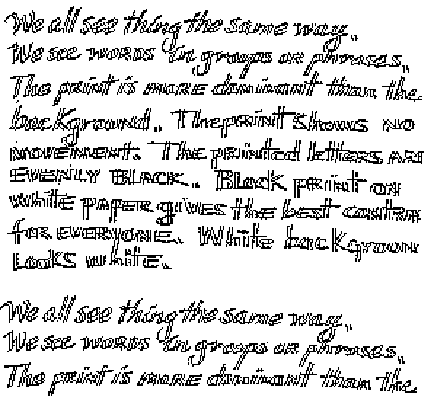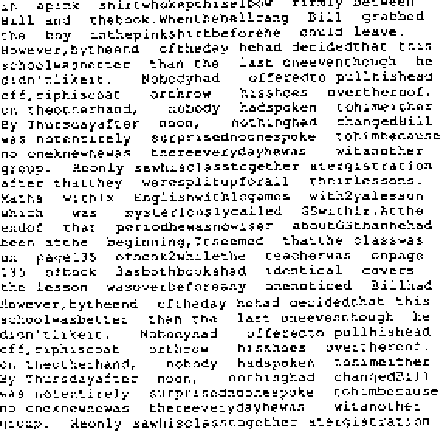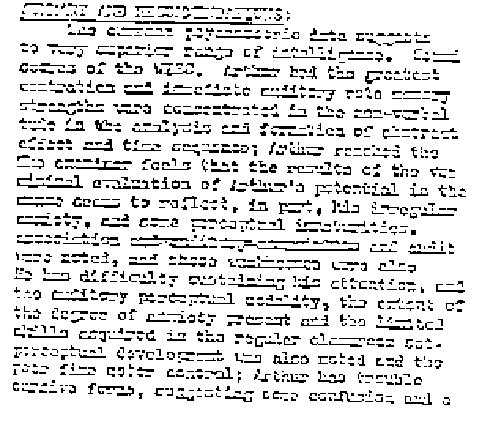
What is Dyslexia?

What and why we chose this issue
According to the Australian Dyslexia Association (2014), Dyslexia affects 10% of the Australian population. This means that in a class of 25 there could be 2 or 3 students with dyslexia. It is for this reason that our group chose to discuss the management of students with dyslexia in a literacy classroom. Throughout this website you can find out all about dyslexia – what it is, what to look for, myths and of course strategies to help students in a literacy classroom.
Why it’s important this issue is addressed
Dyslexia is classed as a Learning Disability. Therefore, it is recognised under the Disability Discrimination Act 1992 and under the Human Rights Commissions. According to the Disability Standards for Education (2005), teachers are obliged to teach students with dyslexia in a way that allows them to access education. Teachers have a responsibility to make sure every student, whether or not they have a disability, is included and has access to the same activities, facilities, resources and education as everyone else. This might mean that teachers need to adjust lessons and equipment so that all students are able to participate.
What is Dyslexia?
According to Brunswick (2012, p. 30), the word ‘dyslexia’ has Greek origin and comes from the words which mean ‘impaired’ and ‘word’. Brunswick further explains that dyslexia can come in many forms and many severities but the link between any dyslexic condition is that anyone with dyslexia has trouble with language, which can include some or all of reading, writing, memory, processing etc. In other words, dyslexia is the umbrella name for the specific neurological learning difficulty and can take many different forms and severities involving a difficulty with language processing and manipulation.
What it looks to have dyslexia
Signs of dyslexia
Lapkin (2014) states that the following persistent signs can help identify students in Primary school who might have dyslexia.
Lower years:
-
Has trouble recognizing the letters of the alphabet
-
Struggles to match letters to sounds, such as not knowing what sounds b or h make
-
Has difficulty blending sounds into words, such as connecting C-H-A-T to the word chat
-
Struggles to pronounce words correctly, such as saying “mawn lower” instead of “lawn mower”
-
Has difficulty learning new words
-
Has a smaller vocabulary than other kids the same age
-
Has trouble learning to count or say the days of the week and other common word sequences
-
Has trouble rhyming
Middle and upper years:
-
Struggles with reading and spelling
-
Confuses the order of letters, such as writing “left” instead of “felt”
-
Has trouble remembering facts and numbers
-
Has difficulty gripping a pencil
-
Has difficulty using proper grammar
-
Has trouble learning new skills and relies heavily on memorization
-
Gets tripped up by word problems in math
-
Has a tough time sounding out unfamiliar words
-
Has trouble following a sequence of directions
Myths about Dyslexia
“Dyslexia just means someone is lazy.”
When someone has dyslexia, it means they use a different part of their brain. This mean the message in their brain takes longer to reach its destination. Because people with dyslexia have to work hard to transmit this message, they can get very tired (What is dyslexia? - Kelli Sandman-Hurley 2013)
“People with dyslexia have no hope for the future.”
Actually, 40% of self-made millionaires have dyslexia. Jamie Oliver, Whoopie Goldberg, Richard Branson, Thomas Edison and Steven Spielberg among many more, all have dyslexia (Famous people with the gift of Dyslexia 2015).
“If you’re Dyslexia you can’t read.”
People with dyslexia can read and many enjoy reading. Learning to read is a challenge but with the right techniques, patience and persistence, anyone with dyslexia has a bright reading future (Dyslexia help starts here 2015)
“I don’t have time for dyslexics, they are too stupid.”
People with dyslexia are often very intelligent and have a great understanding of many concepts. Their ability to communicate these thoughts and knowledge can be very frustrating for them because the message gets lost between their brain and the output source – speaking, writing etc. Helping them to use and manipulate language can have great benefits for not only them but whomever they are trying to communicate to (The Yale Centre for Dyslexia and Creativity 2015).
“They’re faking being dyslexic so they don’t have to do any work.”
Dyslexia is a very frustrating condition to live with. People with dyslexia often struggle to keep up with their peers. When they fall behind, the work piles up and it becomes overwhelming and isolating. This can lead to social issues of bullying and can be difficult to make friends. People with dyslexia, want to be successful to. Their brains are working very hard to do half the amount of work a peer might do. It would be very difficult and frustrating for someone to fake dyslexia, as it affects their whole life (Dyslexia help starts here 2015).
“If dyslexics just see things backwards, can’t they just use a mirror to read?”
The appearances of words can vastly vary from person to person with dyslexia. Sometimes the words or lines merge, the words might jump around the page, the words might look like they are moving or they might not be able to see some of the letters or words on the page (Lapkin 2014).




